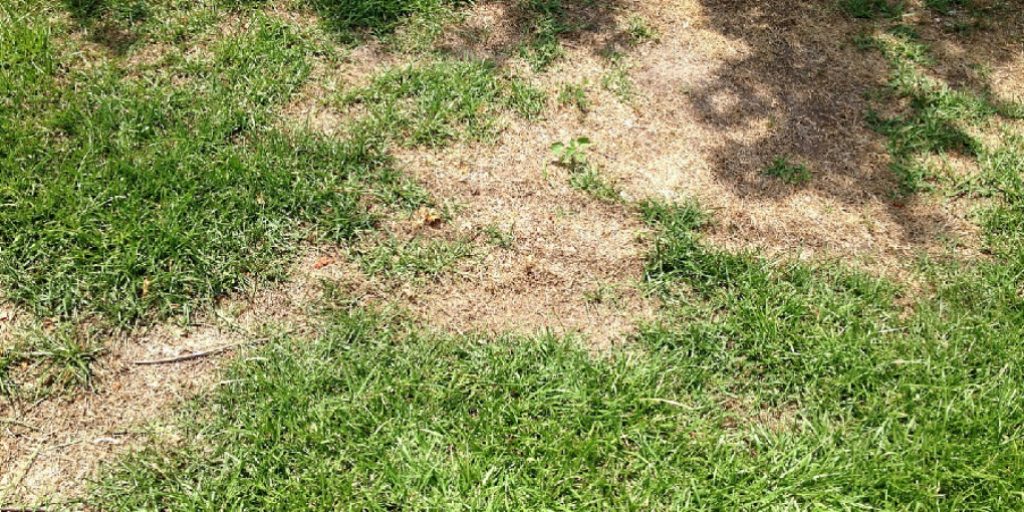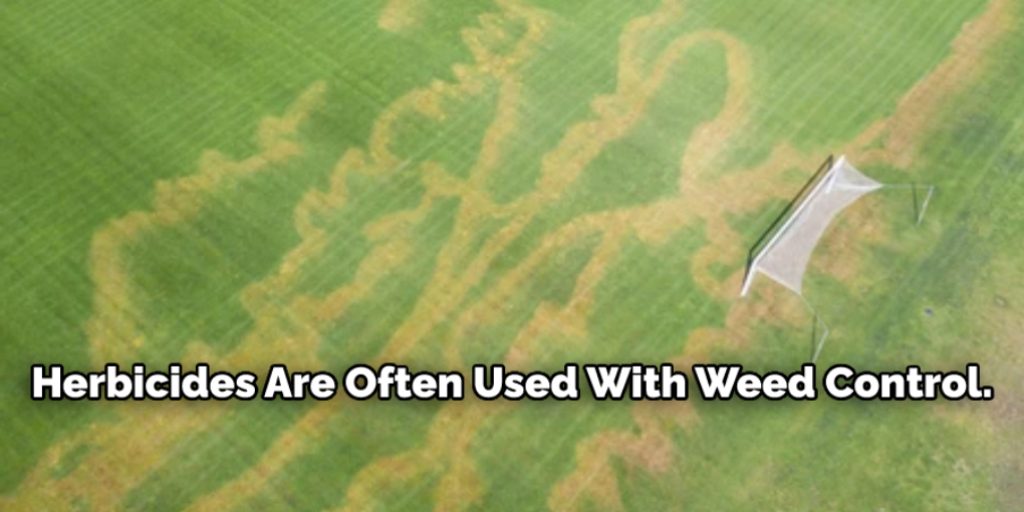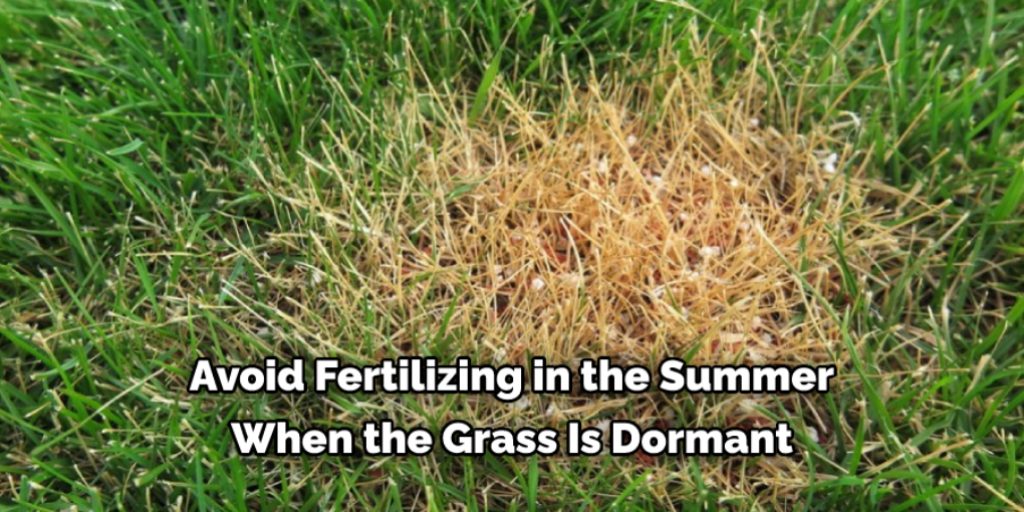How to Fix Over Fertilized Lawn
When we think of a healthy lawn, we usually picture lush green grass and few weeds. However, suppose fertilizer or other chemicals such as herbicides were used too heavily. In that case, the turf can become unhealthy and look patchy with too much growth in one area and sparse growth in another area.
This blog post will show you what to look for and how to fix over fertilized lawns, so they stop being such a pain in the neck!
We all know that the key to a healthy lawn is proper fertilization, but how do you know when there’s too much? The answer may be as simple as looking down. Lawns with high fertilizer levels can become dry and brittle and sometimes even start getting patchy or yellowed.

10 Reasons That Causes Over Fertilized Lawn:
1. Using Too Much Fertilizer:
This can be used as a cause for the over-fertilized lawn. Therefore, applying 2 pounds of nitrogen per 1,000 square feet of lawn space is recommended every year.
2. Using the Wrong Type of Fertilizer:
You can buy three main types of fertilizer from your local store: liquid, slow-release, and conventional. Slow-release or conventional fertilizer is generally recommended, as it reduces the risk of over-fertilization, whereas liquid fertilizer takes effect very quickly.
3. Watering Too Often:
It is recommended to water your lawn once a week. If you are over-watering, the fertilizers will only have the chance to reach deep into the roots of your grass, making it appear greener after each watering.
4. Fertilizing At The Wrong Time:
If fertilized during the summer season, this reduces the risk of over-fertilization as high temperatures will deplete the nitrogen content of the fertilizer. However, fertilization is not recommended during autumn or early spring as it takes time for the fertilizer to act.
5. Using Seed That Has Been Treated With Fertilizers:
It is recommended to use lawn seeds that are non-treated with fertilizers. Seeds that have been treated will release more nitrogen within the first growing season, which is not recommended.
6. Using Grass Clippings:
Using grass clippings that are dark green or fresh cut may contribute to the over-fertilized lawn. To avoid this, use grass clippings that are not fresh-cut or dark green.
7. Incorrect Measurements of Fertilizer:
Before applying fertilizers, it is recommended to use a spreader with a setting that matches the fertilizer bag. It is also recommended to increase the spreader setting by one-half if using a pellet fertilizer.
8. Incorrect Timing of Weed Control:
If you apply weed control before or after fertilizing, it can cause over-fertilization and damage your lawn. Therefore, it is recommended to use weed control either in the spring or fall.
9. Incorrect Mowing Heights:
It is recommended to have your grass cut at an altitude of 2-3 inches, although some lawns require cutting the grass more often than once every 2-3 months. This can contribute to uneven grass growth rates if not correctly maintained.
10. Incorrect Application of Herbicides:

Herbicides are often used with weed control. However, it is recommended to apply them separately. For example, if you use herbicides after fertilizing your lawn, the grass will absorb more fertilizer than usual, leaving it vulnerable to over-fertilizing.
Steps to Take: How to Fix Over Fertilized Lawn
Here are some steps that can be taken to help on how fix over fertilized lawns:
1. Adjust Fertilizer Rate:
Having an over-fertilized lawn is not always a bad thing. For example, if you have yellow or dead patches, this can be easily fixed by simply increasing the amount of fertilizer applied to these areas.
It is important to note, however, that over-fertilization needs to be monitored carefully. This is because over-fertilized grass can cause other problems in addition to dead or yellow patches of grass, such as damage to the roots and stolons, which could weaken the lawn.
2. Adjust Mowing Height:
You may need to decrease the mowing height if your grass turns brown. Increasing the mowing size would benefit over-fertilized lawns since it will help keep nutrients leaching to a minimum. You may also consider using a mulching lawnmower, which will result in clippings falling back into place and maintaining nutrients from leaving the lawn area entirely.
3. Water in Moderation:
Watering too much is also a problem when fixing an over-fertilized lawn. You must have enough water for your grass to germinate, but too much water will increase the nutrients being leached from the soil. So be sure you only water about 1 inch of moisture per week.
4. Core Aerate:
If the soil is compacted, it may be a good idea to aerate some lawn areas to increase water penetration and reduce nutrient leaching. In addition, core aeration rips up small holes into the ground that can help improve airflow and therefore help the grass grow better.
5. Remove Thatch:
Thatch is a layer of organic debris that forms on the soil surface beneath grass clippings. It can become a significant problem since it will prevent air and water from penetrating the soil. If your lawn is very patchy, removing some of this thatch may help repair those areas.
To do this, you will need to rent or purchase a vertical mower that has blades shaped like scissors. These blades will cut into the thatch and allow for better water penetration.
Some Tips to Prevent Over Fertilization in Your lawn:

1. Avoid fertilizing in the summer when the grass is dormant. This can cause damage to your lawn. In addition, fertilizer will burn your property in hot weather. Instead, wait until after the last frost in the spring or fall when the grass grows before fertilizing again.
2. Do not apply fertilizer around trees, especially young ones, because it can stunt tree growth.
3. If you fertilize, use slow-release fertilizer because this type of fertilizer reduces the amount of nitrogen released per day over a more extended period. This is best for your lawn and helps reduce the chance of burning your grass. Also, choose a fertilizer with at least 25% Potassium (K) content to minimize water usage and promote better root growth.
4. Low nitrogen, slow-release fertilizers are best for lawns stressed by little rainfall or low water levels (drought conditions).
Conclusion:
We have provided all the necessary tips and steps on how to fix over-fertilized lawns. Combine the tips listed above with other helpful information like aerating your soil or fertilizing at the right time of year and not during the summer. You can help reduce your nitrogen usage and help prevent over-fertilization.
That’s it! You now have all the knowledge you need to get your lawn looking green and healthy again. If you are still unsure how to proceed, consult a professional or ask for help from someone more knowledgeable on this subject than yourself.
Your grass will thank you in the long run with its gorgeous new look!




